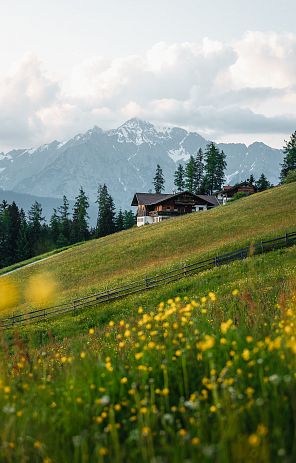Churches & Monasteries. In Volders
The interior was redesigned in 1766/67. The ceiling fresco and the altarpiece, which are the work of the famous Baroque painter Martin Knoller, date from this period.
Between 1977 and 1988, the Karlskirche was renovated at a cost of 33 million schillings and is now one of the most beautiful churches located directly on a highway.
(Address: Volderwaldstraße 3, Volders, open daily all year round)
Church of St Charles - Volders
A few facts about the builder Dr. Hippolytus Guarinoni:
Guarinoni was one of the most important personalities in Tyrol in his time. He had spent his youth as a page at the court of Bishop Charles Borromeo of Milan and, after completing his studies, became personal physician to Archduchesses Christiana and Eleonora, who both belonged to the Hall convent. Eventually he also became the town physician of Hall. He held this office until his death on May 31, 1654. Throughout his life, Guarinoni was a critic of social conditions and advocated modern ideas in his medical works.
There is a particularly impressive example of his personal relationship with this place in Volders: the church and monastery of the Servites on the Volders bridge. According to legend, Bishop Charles Borromeo once predicted to his page Guarinoni that the latter would one day build a church and monastery in his honor. In fact, however, the initiative for the construction was taken by Guarinoni's friend, the Capuchin Thomas of Bergamo.
Although Guarinoni himself worked on the project, which earned him the nickname "Master Pölten", the finished church building was only consecrated 34 years later, on July 25, 1654, by Bishop Jesse Perkhofer of Brixen in honour of St. Charles Borromeo. By this time, however, Guarinoni had already been dead for two months.
A little anecdote about St. Charles Church: "Stone of Obedience"
The "Stone of Obedience" should also not be forgotten, which, according to tradition, had come loose above the building site and was about to fall on the construction workers. However, a shout from Guarinoni is said to have miraculously brought it to a halt. In memory of the threat he had survived, Guarinoni had part of it visibly walled in. (the stone and a plaque can be found in St. Charles Church just after the entrance and the side altar on the right-hand side)



